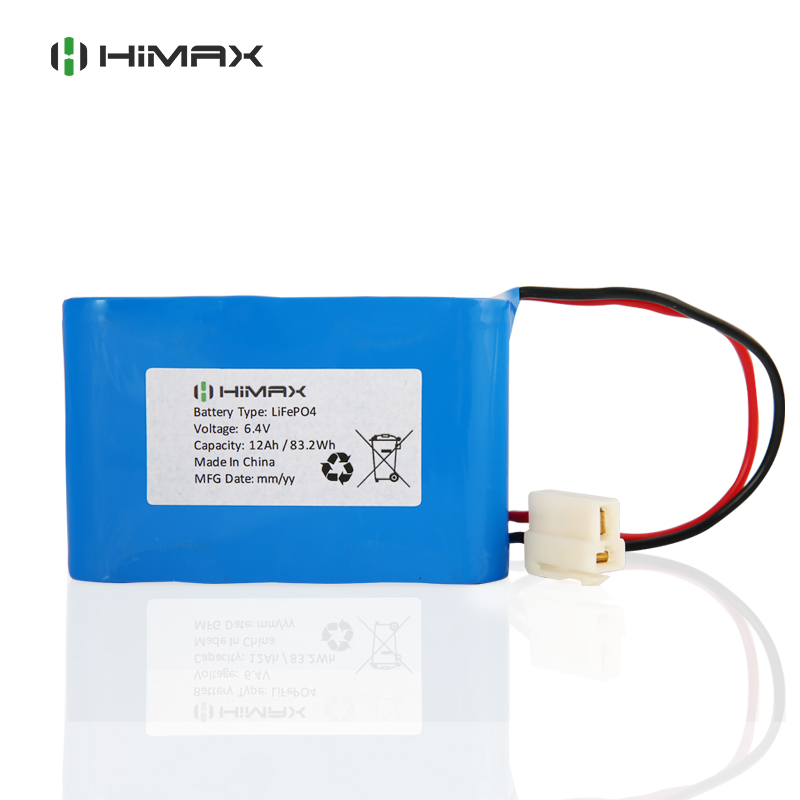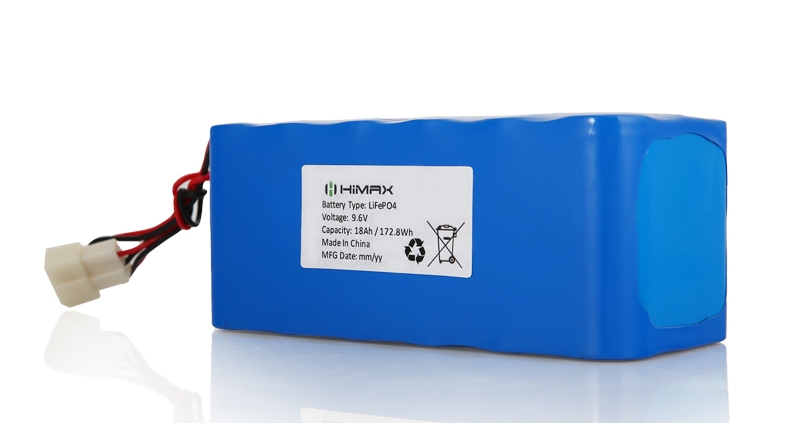The difference between lithium iron manganese phosphate and lithium iron phosphate
In addition to custom lithium battery pack being popular, manganese-based cathode materials are ushering in the second wave of peaks. Manganese-based batteries were first promoted during the heyday of the Nissan Leaf. As a second-generation product of manganese-based materials, lithium iron manganese phosphate has entered the early stages of mass production and has attracted much attention from the industry.
Companies such as AVIC lithium battery, Guoxuan Hi-Tech, and REPT have all mentioned some progress in iron manganese super phosphate lithium batteries.For example, from 2023 to 2024, the energy density of REPT’s lithium iron manganese phosphate will reach 500Wh/L, supporting a battery life of 800 kilometers for pure electric vehicles; AVIC Lithium Battery will reduce lithium consumption by 15% through lithium iron manganese phosphate batteries. In addition to the above-mentioned companies, many power battery manufacturers such as CATL, BYD, and EVE Lithium Energy among the top ten power battery companies have also begun to carry out related research and development and layout of iron manganese phosphate lithium batteries.
Among them, the lithium iron manganese phosphate produced by many companies has passed battery pilot tests in the first half of this year and is sending samples to car companies for testing. CATL will mass-produce M3P batteries in the second half of the year. Another potential product, lithium-rich manganese-based batteries, is still in the development stage. At present, the lithium-rich manganese-based material has reached 400mAh/g in the laboratory stage, and is expected to reach 400mAh/g in mass production. The battery energy density can reach 400Wh/kg.
Lithium iron manganese phosphate has obvious advantages and disadvantages
The application of manganese in custom lithium battery pack cathode materials is currently mainly lithium manganate and lithium nickel cobalt manganate (ternary materials). With the advancement of material modification technology, manganese-based cathode materials lithium iron manganese phosphate and lithium-rich manganese-based technology have developed rapidly.
Lithium iron manganese phosphate has become a transition product between lithium iron phosphate and ternary batteries. It is characterized by higher energy density than lithium iron phosphate and lower cost than ternary lithium batteries.

Lithium iron manganese phosphate has the same olivine structure as lithium iron phosphate, and the structure is more stable during charge and discharge. Even if all lithium ions are embedded during charging, the structure will not collapse, making it safer. Specifically, you will find that the advantages and disadvantages of lithium iron manganese phosphate are very obvious.
First, the energy density is better. The voltage platform of lithium iron manganese phosphate is as high as 4.1V, which is higher than the 3.4V of lithium iron phosphate. The high voltage brings an increase in energy density. The theoretical energy density is 15%-20% higher than that of lithium iron phosphate, and can basically reach the level of ternary battery NCM523.
Second, the low temperature performance is better. Lithium iron manganese phosphate has better low-temperature performance than lithium iron phosphate, and the capacity retention rate at -20°C can reach about 75%. Third, it has the characteristics of lithium iron phosphate batteries and is safer than ternary batteries. Lithium iron manganese phosphate has an olivine structure and has better safety and cycle stability than ternary.
Fourth, manganese ore resources are abundant and the cost is low. The cost of lithium iron manganese phosphate is only about 5%-10% higher than that of lithium iron phosphate. Taking into account the improvement in the energy density of lithium iron-manganese phosphate, in terms of battery installed cost, the cost per watt-hour of lithium iron-manganese phosphate is slightly lower than that of custom lithium battery pack , and significantly lower than that of ternary batteries.
The disadvantage of lithium iron manganese phosphate battery is that its conductivity and lithium ion diffusion speed are low, which will make it difficult to fully utilize its capacity advantage and poor rate performance. However, in the opinion of Guoxuan Hi-Tech personnel, lithium iron manganese phosphate is basically an insulator. “Japan’s Sony Corporation has calculated that the band gap of general lithium iron phosphate materials is about 0.3eV, which is a semiconductor, but lithium iron manganese phosphate is 2eV, which is basically an insulator and does not conduct electricity.”
Improvement plan for lithium iron manganese phosphate materials
Compared with custom lithium battery pack , due to the addition of manganese, the dissolution of manganese will cause its cycle life to be reduced. In view of the above reasons, when manganese is used as a single active material, doping, carbon coating, nanotechnology modification and other methods are often used to improve the performance of lithium iron manganese phosphate materials.
This conductive network cannot be formed if it is not on the nanoscale. But once nanosized, it is not easy to combine the slurry and the coating is not easy to apply. It is difficult to use as a lithium iron manganese phosphate battery alone, and many problems need to be solved. Zhongchuang Aviation’s solution is to consider how to gradient design the manganese element. The inside and outside are not necessarily uniform, there may be a gradient design. It can be more on the outside and less on the inside, so that the entire conductive path will be smoother.
Secondly, it is doped with many other transition metal elements to give it a better balance of energy and conductivity. Then there is a problem on the interface, and coating the interface will solve the conductive problem of the interface on the one hand. On the other hand, it also effectively solves the problem of life decay caused by the phase change of the lithium manganese material itself.
REPT, one of China’s top ten lithium marine battery manufacturers, also mentioned lithium iron manganese phosphate. Their goal is to achieve an energy density of 500Wh/L for lithium iron manganese phosphate batteries and a driving range of 800 kilometers in 2023-2024. In addition to the above-mentioned companies, CATL’s M3P batteries are also iron manganese phosphate lithium batteries, which are called phosphate-based ternary batteries. CATL will invest in Lithitech in November 2021, holding 60% of the shares. Among them, Lithitech’s main business is lithium iron manganese phosphate materials, with a production capacity of 2,000 tons/year.
The direction given by researchers from China Electronics Technology Group for the application of lithium iron manganese phosphate is that it can be mixed with ternary materials to improve the safety of ternary material batteries; or mixed with lithium iron phosphate to increase the energy density of custom lithium battery pack.
The past and future of manganese-based batteries
The currently hotly debated lithium iron manganese phosphate is a second-generation manganese-based battery, a transitional product through material modification. The first generation of manganese-based batteries were lithium manganate batteries. Lithium manganate cathode material was invented 20 years ago and was used in the first generation of new energy vehicles in Japan and South Korea.
Lithium manganese oxide batteries in Japan and South Korea mainly use single crystal particle doping. Among them, the master was the Japanese battery company AESC at the time. Early model Nissan Leafs were known for their battery safety. But the shortcomings are also obvious. Due to low energy density, the driving range is only 200 kilometers. However, at present, AESC still takes ternary batteries as the mainstream development direction.
Lithium iron manganese phosphate is not a new direction either. As early as 2013, BYD considered lithium iron manganese phosphate as an upgrade route for lithium iron phosphate and began to apply for relevant patents. However, due to the subsidy policy tilting towards ternary materials with higher energy density, and BYD’s failure to solve the problems of low cycle life and excessive internal resistance of lithium iron manganese phosphate batteries, this route has not become mainstream. BYD once stopped phosphoric acid Iron, manganese and lithium exploration.
However, starting in 2020, BYD has begun to have relevant patent application records. Guoxuan Hi-Tech is also an early company that developed iron manganese phosphate lithium batteries. According to Xu Xingwu, Guoxuan Hi-Tech was also developing lithium iron manganese phosphate batteries in 2013, and obtained new product certificates for lithium iron manganese phosphate batteries in 2014 and 2017 respectively. As early as 2014, AVIC Aluminum began to try and explore on the road to high manganese.

In 2014, AVIC lithium battery has adopted lithium iron manganese phosphate and ternary batteries as composite material systems and has achieved mass production. At that time, it was a station wagon, and the shipments were actually quite large. Starting in 2021, raw material prices will skyrocket. Against this background, lithium iron manganese phosphate batteries have once again attracted the attention of enterprises, and reports on related layouts have also continued to increase.
The next highly anticipated cathode material is lithium-rich manganese-based material. Lithium-rich manganese-based materials have high specific capacity, low cost and good safety. Lithium-rich manganese-based cathode materials can be considered to be composed of two components, Li2MnO3 and LiMO2, which are uniformly compounded on the atomic scale to form lithium-rich manganese-based materials.
Lithium-rich manganese-based materials are mainly composed of cheaper manganese elements and contain less precious metals. Compared with commonly used lithium cobalt oxide and nickel cobalt manganese ternary cathode materials, they are not only lower in cost, but also safer. The advantages are outstanding, but there are also many disadvantages. Lithium-rich manganese-based materials have shortcomings such as initial irreversible capacity loss, poor rate performance, and voltage attenuation during cycling.
For manganese-rich lithium-based materials, there are great advantages and great difficulties. It can achieve 400mAh/g, but there is a problem of voltage attenuation. There is no better way to lose oxygen during the circulation process, and the challenge is still relatively large. Professionals believe that lithium-rich manganese-based material batteries can reach the level of 300mAh/g after mass production, and can achieve 400Wh/kg batteries when paired with silicon carbon.
At present, we see many companies making arrangements in the field of lithium-rich manganese-based materials. According to relevant company announcements, cathode material companies such as Rongbai Technology and Dangsheng Technology have planned the research and development of lithium-rich manganese-based materials in advance.
It has now entered the small trial stage and is actively cooperating with relevant customers to carry out product performance optimization and process amplification experiments on the company’s existing production lines.
In addition, Zhenhua New Materials, Zhongwei, Kungong Technology, Tianyuan Group, DFD and other companies have also carried out research and development projects on lithium-rich manganese-based materials (precursors) and are currently actively exploring the feasibility of their commercialization.
final thoughts
New manganese-based cathode materials are rapidly emerging, and their improved permeability is expected to increase the use of manganese in the custom lithium battery pack industry by more than 10 times between 2021 and 2035, and is expected to become one of the main cathode materials for power batteries.
Source:https://www.takomabattery.com/manganese-based-batteries-will-usher-in-another-peak/
If you have any question, please feel free to contact us:
- Name: Dawn Zeng (Director)
- E-mail address: sales@himaxelectronics.com



